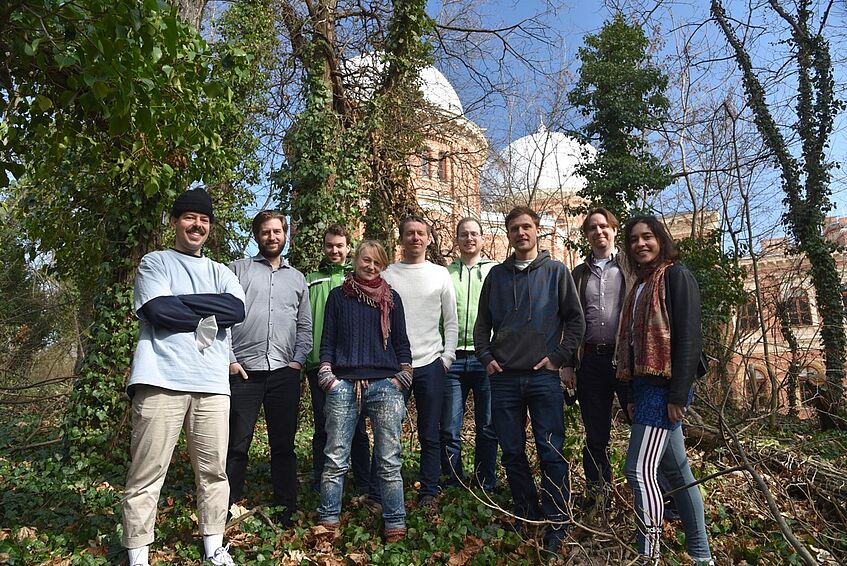Data Science in Astrophysics
Computational methods are taking on an increasingly important role in all sciences. Astronomy is no exception. In fact, computational science is one of the most powerful tools to recreate the Universe from its very origin until its present-day large-scale structure, the cosmic web, and the galaxies it hosts. Consequently, a whole new research group on data science, under the supervision of Prof. Oliver Hahn, was founded at the Department of Astrophysics, Vienna, jointly with the Faculty of Mathematics, Vienna.

Cosmic web.
Its main scientific focus lies on cosmology and the large-scale structure of the Universe. To study the evolution of these structures, dark matter – and dark energy – have to be included. Dark matter is not visible to our eyes or any conventional detectors as it does not interact with light. But in the formation of structures and the behaviour of large celestial bodies we see its gravitational influence. In the early Universe clumps of dark matter pulled in regular, baryonic matter and once these so-called halos were massive enough, they collapsed. First stars and galaxies were born and over the course of the next 13.5 billion years the Universe arranged itself into its present form, whilst still expanding.
Observational data for all-sky surveys can map the architecture of the cosmic web. Its evolution, however, is traced by cosmological simulations. A supercomputer is fed with all available data from observations, theories and mathematical calculations. Different approaches, like statistical methods and machine learning or deep learning, are tested on the programme. A simulation typically runs from very early times close to the Big Bang until today. At this moment the values from cosmological parameters are then extracted and compared to the existing observational data. One of the crucial problems here is that the exact setup from early times is highly uncertain, only bits and pieces hint to the evolution of the Universe. After all, we were not there and there is still very little observational data. Hence, simulations allow us to test which theories are consistent with the Universe we can observe.

Forschungsgruppe Oliver Hahn
One aspect of Prof. Hahn’s group is contributing to refining the initial conditions that governed the early Universe for which all cosmological simulations are started. Once found, they will greatly increase the accuracy of already existing large-scale simulations which trace the evolution of the Universe. Not only full large-scale simulation profit from the improved initial conditions but also smaller zoom-in runs. Both serve to connect the early Universe with galaxy simulations and to better understand the world we live in. Another aspect lies in developing improved simulation methods for dark matter and also intergalactic gas. The goal here is to make the simulations both, more accurate and more efficient. This requires astrophysical modelling as well as advanced coding for parallel computers.
Computational skills are in great demand both for research and private industries. For young people, the career opportunities are sky-rocketing. Unfortunately, there is still a gender gap, especially in computing. Already in middle and high school, girls are often not encouraged as much as boys to engage with informatics. Prof. Hahn’s group wants to support female students at university levels, where they can deepen their programming abilities.
The advances in simulations from the last few decades opened a new way into cosmology. Our view on the Universe is becoming more tangible every day and with increasing computing power we get an even clearer picture. Prof. Hahn’s group wants to contribute to the understanding of the world that surrounds us. The group is still growing and looks for new members to answer the ultimate questions of life, the Universe and everything.
Written by: Sanje Fenkart
